In Greek mythology, the Telchines were the original inhabitants of the island of Rhodes and were known in Crete and Cyprus.
The History of the Britons is a purported history of early Britain written around 828 that survives in numerous recensions from after the 11th century. The Historia Brittonum is commonly attributed to Nennius, as some recensions have a preface written in that name. Some experts have dismissed the Nennian preface as a late forgery and argued that the work was actually an anonymous compilation.

The Annales Cambriae is the title given to a complex of Latin chronicles compiled or derived from diverse sources at St David's in Dyfed, Wales. The earliest is a 12th-century presumed copy of a mid-10th-century original; later editions were compiled in the 13th century. Despite the name, the Annales Cambriae record not only events in Wales, but also events in Ireland, Cornwall, England, Scotland and sometimes further afield, though the focus of the events recorded especially in the later two-thirds of the text is Wales.

The Chi Rho is one of the earliest forms of the Christogram, formed by superimposing the first two (capital) letters—chi and rho (ΧΡ)—of the Greek ΧΡΙΣΤΟΣ in such a way that the vertical stroke of the rho intersects the center of the chi.
Abu Abd Allah Muhammad ibn Umar ibn Waqid al-Aslami (c. 130 – 207 AH; commonly referred as commonly referred to as al-Waqidi was an early Muslim historian and biographer of the Islamic prophet Muhammad, specializing in his military campaigns. His surname is derived from his grandfather's name Waqid, and thus he became famous as al-Imam al-Waqidi. He served as a judge for the Abbasid caliph al-Ma'mun. Several of al-Waqidi's works are known through his scribe and student, Ibn Sa'd.
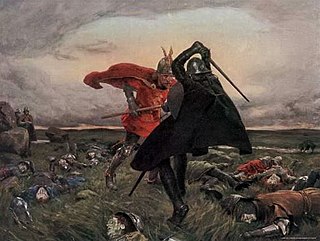
The Battle of Camlann is the legendary final battle of King Arthur, in which Arthur either died or was fatally wounded while fighting either alongside or against Mordred, who also perished. The original legend of Camlann, inspired by a purportedly historical event said to have taken place in the early 6th-century Britain, is only vaguely described in several medieval Welsh texts dating from around the 10th century. The battle's much more detailed depictions have emerged since the 12th century, generally based on that of a catastrophic conflict described in the pseudo-chronicle Historia Regum Britanniae. The further greatly embellished variants originate from the later French chivalric romance tradition, in which it became known as the Battle of Salisbury, and include the 15th-century telling in Le Morte d'Arthur that remains popular today.
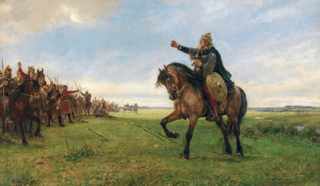
Hlöðskviða, known in English as The Battle of the Goths and Huns and occasionally known by its German name Hunnenschlachtlied, is an Old Norse heroic poem found in Hervarar saga ok Heiðreks. Many attempts have been made to try to fit it with known history, but it is an epic poem, telescoping and fictionalising history to a large extent; some verifiable historical information from the time are place names, surviving in Old Norse forms from the period 750–850, but it was probably collected later in Västergötland.

The Anabasis of Alexander was composed by Arrian of Nicomedia in the second century AD, most probably during the reign of Hadrian. The Anabasis is a history of the campaigns of Alexander the Great, specifically his conquest of the Persian Empire between 336 and 323 BC. Both the unusual title "Anabasis" and the work's seven-book structure reflect Arrian's emulation of the Greek historian Xenophon, whose own Anabasis in seven books concerned the earlier campaign "up-country" of Cyrus the Younger in 401 BC.
The Fifteen Decisive Battles of the World: from Marathon to Waterloo is a book written by Sir Edward Shepherd Creasy and published in 1851. This book tells the story of the fifteen military engagements which, according to the author, had a significant impact on world history.

The Annals of the Kingdom of Ireland or the Annals of the Four Masters are chronicles of medieval Irish history. The entries span from the Deluge, dated as 2,242 years after creation to AD 1616.

The Annals of Ulster are annals of medieval Ireland. The entries span the years from 431 AD to 1540 AD. The entries up to 1489 AD were compiled in the late 15th century by the scribe Ruaidhrí Ó Luinín, under his patron Cathal Óg Mac Maghnusa, on the island of Senadh-Mic-Maghnusa, also known as Senad or Ballymacmanus Island, near Lisbellaw, on Lough Erne in the kingdom of Fir Manach (Fermanagh). Later entries were added by others.

The Zuo Zhuan, often translated The Zuo Tradition or The Commentary of Zuo, is an ancient Chinese narrative history that is traditionally regarded as a commentary on the ancient Chinese chronicle Spring and Autumn Annals. It comprises 30 chapters covering a period from 722 to 468 BC, and focuses mainly on political, diplomatic, and military affairs from that era.

The Blessing of Jacob is a prophetic poem that appears in Genesis at 49:1–27 and mentions each of Jacob's twelve sons. Genesis presents the poem as the words of Jacob to his sons when Jacob is about to die.
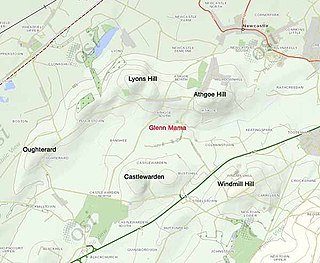
The Battle of Glenn Máma or Glenmama took place most probably near Lyons Hill in Ardclough, County Kildare, Ireland, in AD 999 between Windmill Hill and Blackchurch. It was the decisive and only engagement of the brief Leinster revolt of 999–1000 against the King of Munster, Brian Boru. In it, the combined forces of the Kingdoms of Munster and Meath, under King Brian Boru and the High King of Ireland, Máel Sechnaill II, inflicted a crushing defeat on the allied armies of Leinster and Dublin, led by King Máel Mórda of Leinster.

Ghazipur district is a district of Uttar Pradesh state in northern India. The city of Ghazipur is the district headquarters. The district is part of Varanasi Division. The region of Ghazipur is famous mainly for the production of its unique rose-scented Spray called Gulab Jal, and for the tomb of the Governor General of British India, Lord Cornwallis, who died here. His tomb is situated in Western part of City, and is conserved by Archaeological Survey of India.

The Anglo-Saxon Chronicle is a collection of annals in Old English, chronicling the history of the Anglo-Saxons.
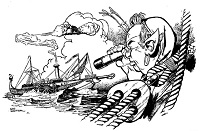
"Finished" is a science fiction short story by American writer L. Sprague de Camp, part of his Viagens Interplanetarias series. It was first published in the magazine Astounding Science Fiction in the issue for November, 1949. It first appeared in book form in the collection The Continent Makers and Other Tales of the Viagens, published in hardcover by Twayne Publishers in 1953 and in paperback by Signet Books in November, 1971.
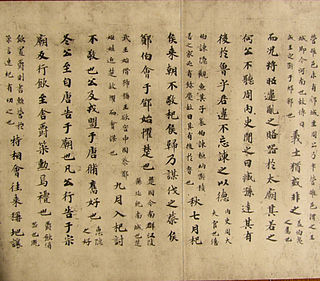
The Spring and Autumn Annals is an ancient Chinese chronicle that has been one of the core Chinese classics since ancient times. The Annals is the official chronicle of the State of Lu, and covers a 241-year period from 722 to 481 BCE. It is the earliest surviving Chinese historical text to be arranged in annals form. Because it was traditionally regarded as having been compiled by Confucius—after a claim to this effect by Mencius—it was included as one of the Five Classics of Chinese literature.

Publius Sulpicius Quirinius, also translated as Cyrenius, was a Roman aristocrat. After the banishment of the ethnarch Herod Archelaus from the tetrarchy of Judea in AD 6, Quirinius was appointed legate governor of Syria, to which the province of Judaea had been added for the purpose of a census.
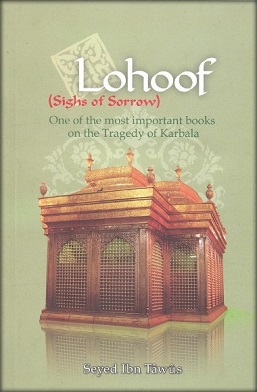
Lohoof is a book by Sayyed Ibn Tawus, a Shia jurist, theologian, and historian. It is kind of Maqtal al-Husayn, narrating the Battle of Karbala, the death of Husayn ibn Ali, and subsequent events.